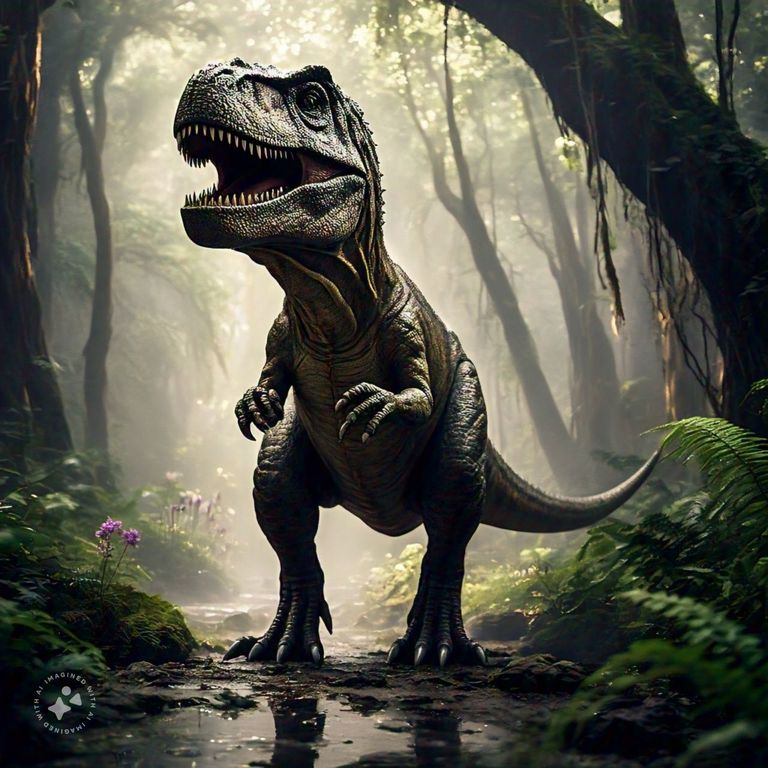How are you All. Hope fine and enjoy your daily life. I am here to Share my knowledge about the Dinosaur.
Let's start our task without any more delay of time.

Made By AI
The Dinosaur: Development & consequences, background
When the term ‘dinosaur’ is used it has a sentiment of huge, prehistoric animals which went extinct millions of years ago. These amazing animals are very popular among different people and are equally interesting to this day. In a bid to meet this objective, the following subtopics will be explored in this article; Historical background and evolution of the dinosaurs The age of the dinosaurs The decline of the dinosaurs
Sometimes we can find out about the history of certain dinosaur discoveries by learning all about the things in bold font .
Sir Richard Owen coined the term in 1842, that of a British biologist and paleontologist. Deriving from the two Greek terms, deinos meaning terrible or fearfully great, and sauros meaning lizard or reptile, the very term is coined. Owen applied this term to the newly identified and emerging fossilized bones during the nineteenth century.
At first, dinosaurs were considered a myth or even an imaginary thing, a strange construction of natural structures on earth. However, dinosaurs were found, and as more and more fossils were found it became clear that dinosaurs were real and that dinosaurs were the largest of the animals on the land during the Mesozoic era, which began 252 million years ago and ended about 66 million years ago.
Evolution of Dinosaurs
Dinosaurs belong to a category of reptiles known as the archosaurs and include flying lizards, bird and crocodile. In millions of years dinosaurs evolved as a vast array of forms, sizes and shapes and could range from small feathered dinosaur about the size of a chicken to some of the gigantic long necked four legged behemoths like the Brachiosaurus.
Dinosaurs can be classified into two main groups: Saurischia – the theropods– reptile-hipped and Ornithischia – bird-hipped or the ornithischians. The first division of Saurischia were large carnivorous theropods such as Tyrannosaurus rex, Velociraptor and the huge long necked sauropods that included Brachiosaurus, Apatosaurus, and the second Saurischia were the herbivores with hadrosaurs with duck bills, triceratops with horn, ankylosaurs with armor on.
Dinosaurs roamed from 165 million years ago, to roughly 66 million years ago, until they went extinct, along with the rest of plant and animal life with the K-Pg extinction event. This massive extinction event, more probably from a giant asteroid impact and subsequent volcanic activitity, engulfed more than 75 percent of all of the species on the planet, including the non-avian dinosaurs.
Legacy of Dinosaurs
Contrary to this, the dinosaurs’ extinction did not a mark the end of the prehistoric age, much less of the dinosaurs themselves. In fact, these features exert influence to the present day on the history of the Earth and the ontogenesis of life.
Therefore, an understanding of dinosaurs can only help us achieve the wider aim of understanding the condition and course of life on the planet. These features of the dinosaurs are his first history from the Mesozoic Era to extinction of the dinosaurs but their impact on the world is still vibrant today.